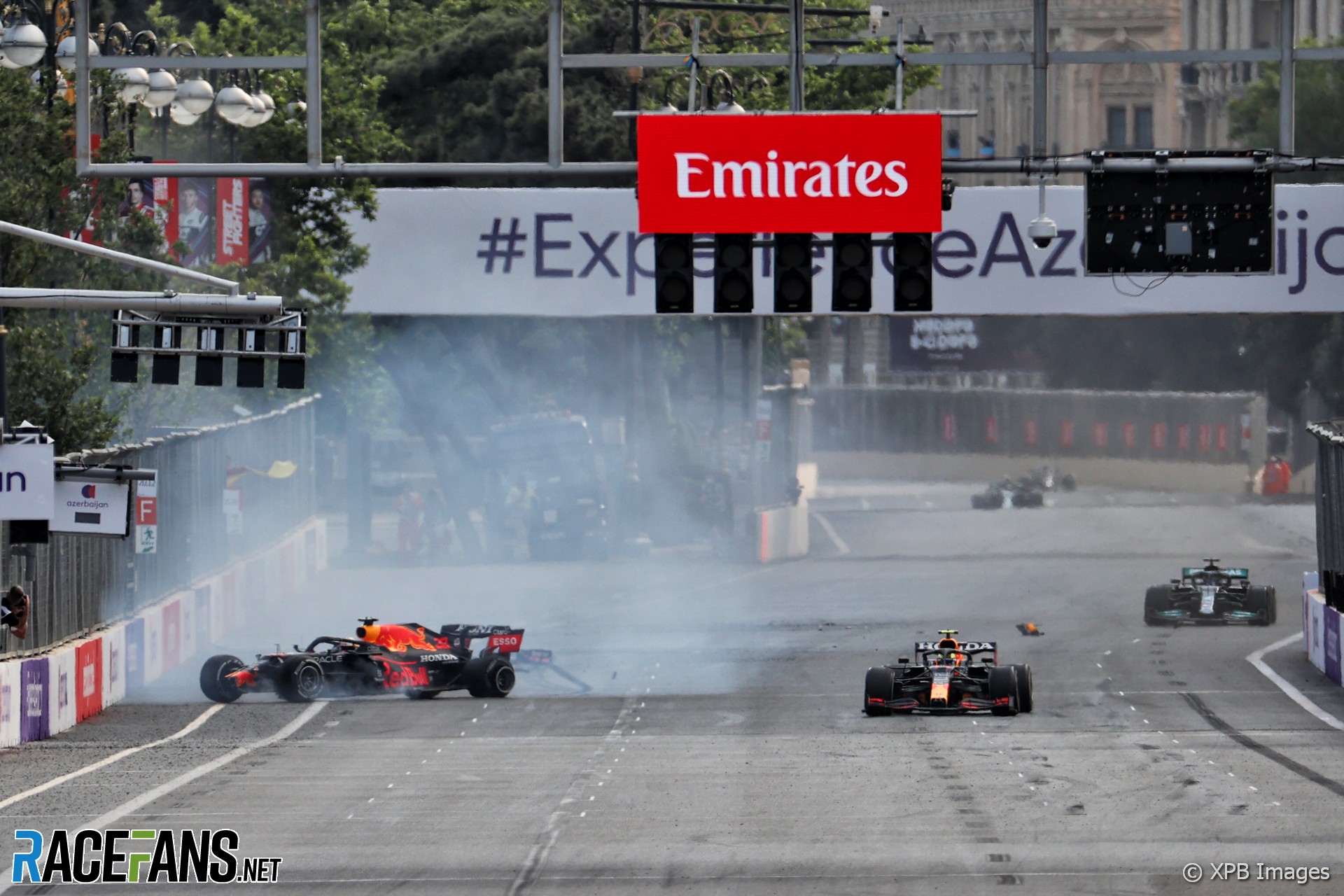
Pirelli has confirmed the tyre failures which put Max Verstappen and Lance Stroll out of the Azerbaijan Grand Prix occured because their tyres were running at lower pressures than expected.
However the sport’s official tyre supplier stated the teams responsible for both cars had complied with the rules and the starting minimum tyre pressures.
Pirelli announced the result of its investigation into the failures on Tuesday. While denying a problem with its tyres had lead to the failures, it also stated the teams had complied with the rules. “We didn’t say that the teams made something that is not permitted in the regulation,” said Pirelli’s head of motorsport Mario Isola.
However F1 has updated a key technical directive for this weekend giving the FIA new powers to check teams’ tyre pressures and blanket temperatures during sessions. Isola said this has been imposed because the Baku failures occured as the tyres were running in different conditions to those Pirelli expected based on their starting pressures.
“What happened in Baku is simply that the running conditions expected were different compared to the actual running conditions and that created the failure,” he said.
“The failure was a circumferential cut on the inside shoulder – for both the tyres it was the same failure mode. When you have a lot of energy going into the tyres with a pressure that is lower compared to the expectation, the result is that on the sidewall you have what we call standing waves.
“Standing waves are putting a lot of energy into the inside shoulder of the tyre and at a certain point the tyre breaks. And that is what happened and the reason why we had this situation in Baku.”
Isola said the updated technical directive for this weekend has been brought in because they do not currently have the ability to check teams’ tyre pressures during races.
“Ideally what we should police, the important parameters to police for the tyres, are the running conditions,” he said. “Running conditions are the running stabilised pressure, the load, the speed, the camber. Obviously some of these parameters are not enforceable simply because we don’t have the tools to do that.”
Advert | Become a RaceFans supporter and
This will change when new tyre regulations are introduced for the 2022 F1 season, said Isola.
“Next year, everybody knows that with the 18-inch tyres we will have a standard sensor that is provided to all the cars and is controlled by the FIA. And in that case, it is possible to police the running pressure.
“Right now each team is fitting different sensors and these sensors are not under control so we cannot police the running stabilised pressure. It is not because we don’t want to do that, it is simply not possible.”
Isola reiterated the teams involved had complied with the regulations as they were written at the time.
“If the regulation is not written which is the running pressure that you have to respect, I cannot say that they were doing something against the regulation in their search of more performance, because if they respect the starting pressure at the moment they are complying with the regulation.
“If the same happens next year when we, with a standard sensor, impose a running pressure, in that case, they are against the regulation. But this is not the case this year and it is not possible to do that simply because we don’t have a sensor where we can rely on measurements.”
Isola added the cuts discovered on tyres from Lewis Hamilton and Sebastian Vettel’s cars were not linked to the failures which caused the two crashes.
“The failure was not related to the cut that we found not only on Lewis’ tyre but also on one tyre from Sebastian,” he said in response to a question from RaceFans. “The cuts were due to debris, for sure, but the debris was not sharp enough to cut the construction.
“At the beginning the idea was that there was some debris cutting the construction because obviously the evidence of other tyres had some cuts on the tread. But then when we finalised investigation, we found that it was not due to the cuts.”
Advert | Become a RaceFans supporter and
2021 French Grand Prix
Browse all 2021 French Grand Prix articles
